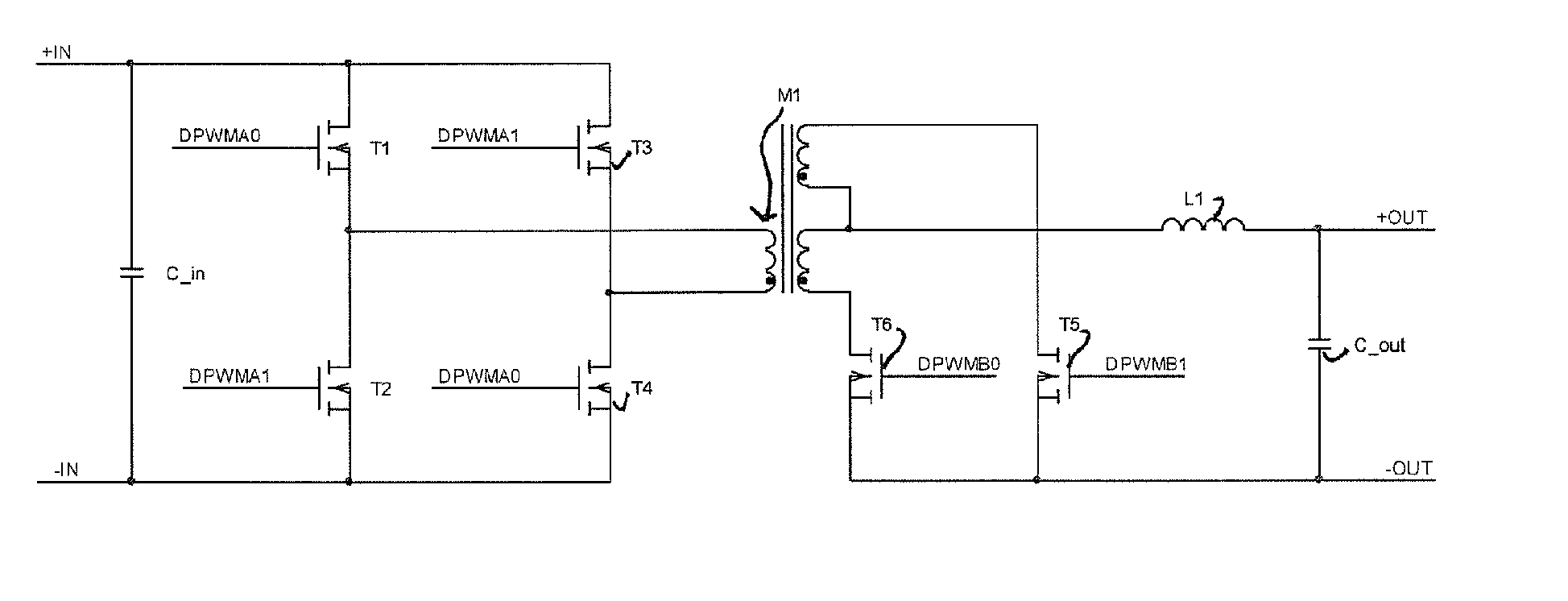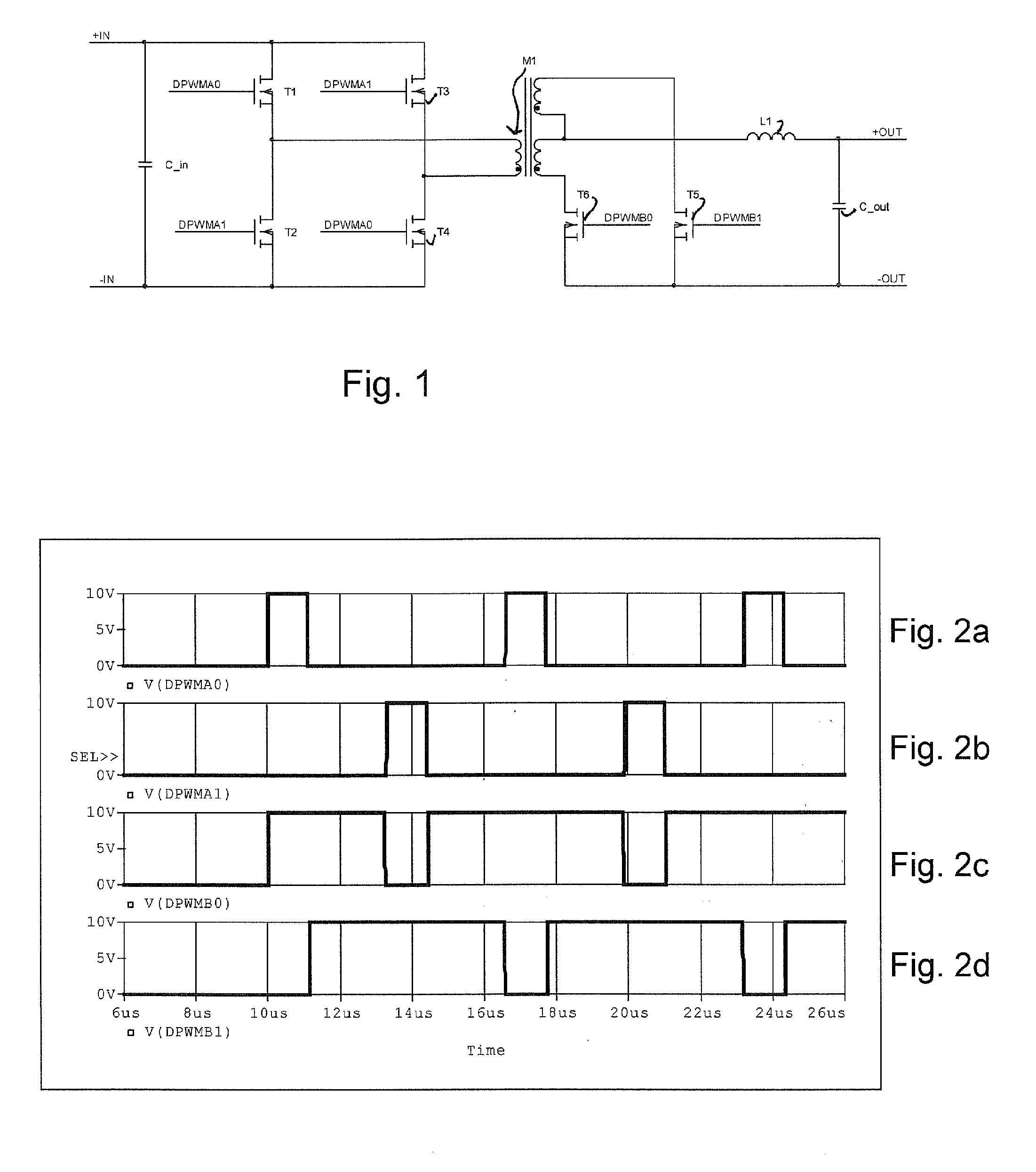Switch Mode Converter and a Method of Starting a Switch Mode Converter
a converter and switch mode technology, applied in the direction of dc-dc conversion, power conversion systems, climate sustainability, etc., can solve the problems of damage to the attached device, the inability of the mosfet to send current in both directions, etc., to reduce and achieve adequate performance. , the effect of reducing the required board area and the cos
- Summary
- Abstract
- Description
- Claims
- Application Information
AI Technical Summary
Benefits of technology
Problems solved by technology
Method used
Image
Examples
Embodiment Construction
[0017]FIG. 1 illustrates a hard switched full bridge converter. The converter comprises a transformer M1 having a primary side including a primary winding and a secondary side including a secondary winding. On the primary winding a first and a second switch elements in the form of mosfets T1, T2 are interconnected by the drain of the second switch element T2 and the source of the first switch element T1. The interconnected source and drain are connected to one end of the primary winding. Third and fourth switch elements T3, T4 are interconnected by the drain of the fourth switch element T4 and the source of the third switch element and the interconnected source and drain are connected to the other end of the primary. The drains of the first T1 and third T3 switch elements are interconnected and the sources of the second T2 and fourth T4 switch elements are interconnected. Between the interconnected sources and the interconnected drains the input voltage is applied. The control signa...
PUM
 Login to View More
Login to View More Abstract
Description
Claims
Application Information
 Login to View More
Login to View More - R&D
- Intellectual Property
- Life Sciences
- Materials
- Tech Scout
- Unparalleled Data Quality
- Higher Quality Content
- 60% Fewer Hallucinations
Browse by: Latest US Patents, China's latest patents, Technical Efficacy Thesaurus, Application Domain, Technology Topic, Popular Technical Reports.
© 2025 PatSnap. All rights reserved.Legal|Privacy policy|Modern Slavery Act Transparency Statement|Sitemap|About US| Contact US: help@patsnap.com



